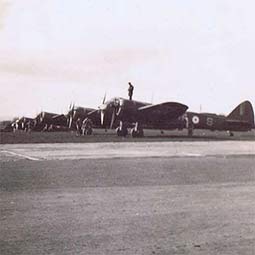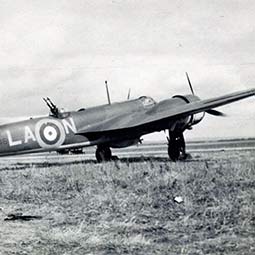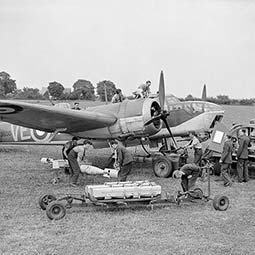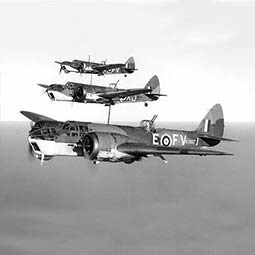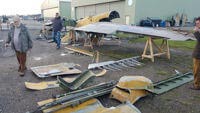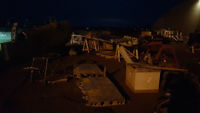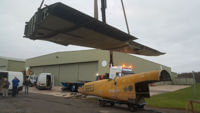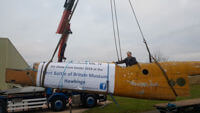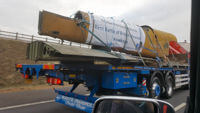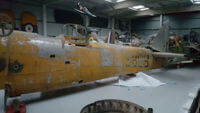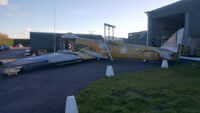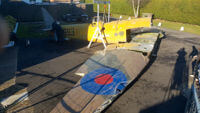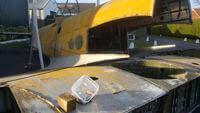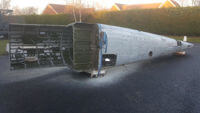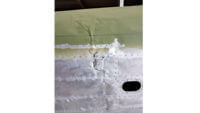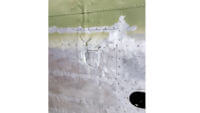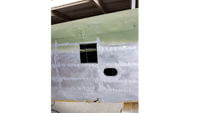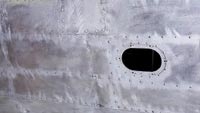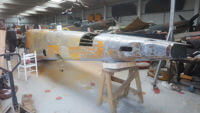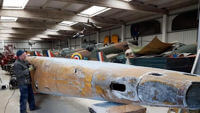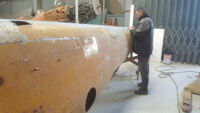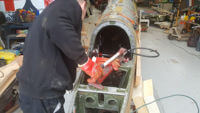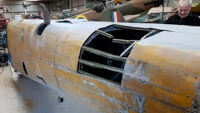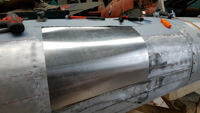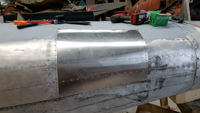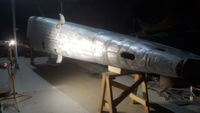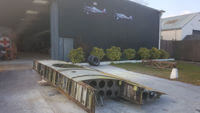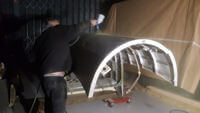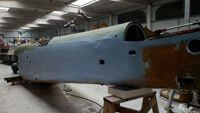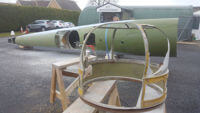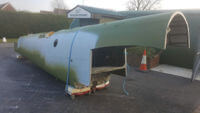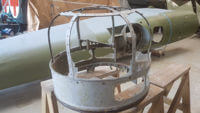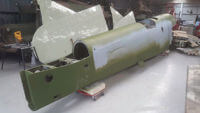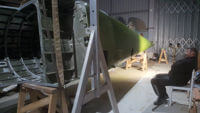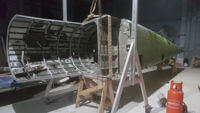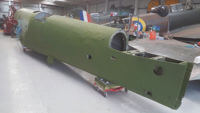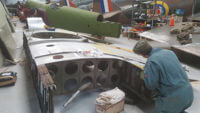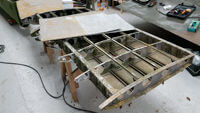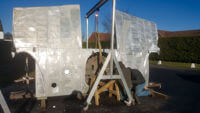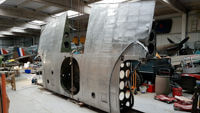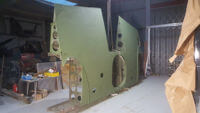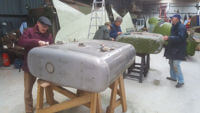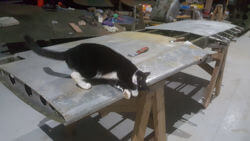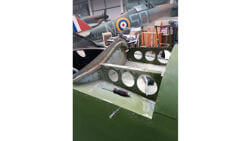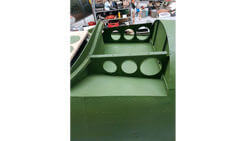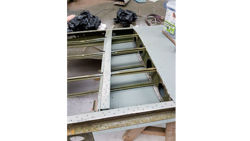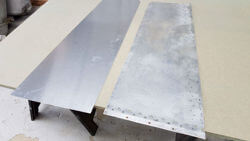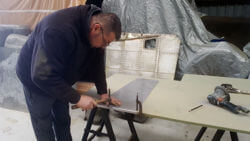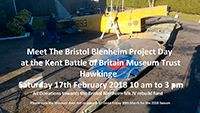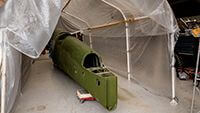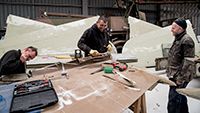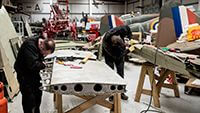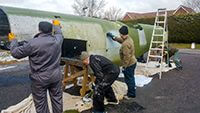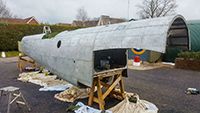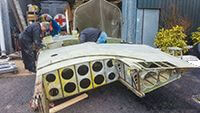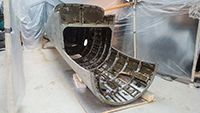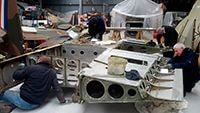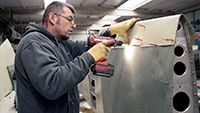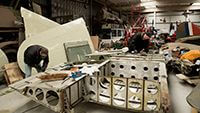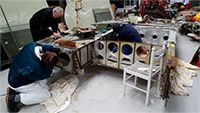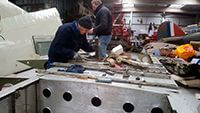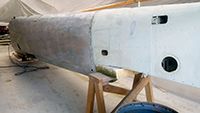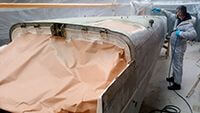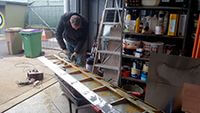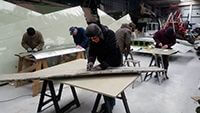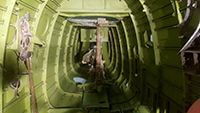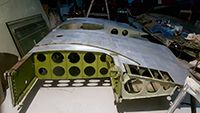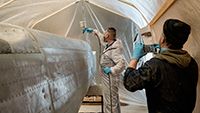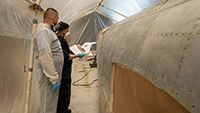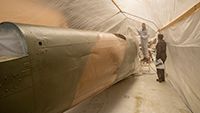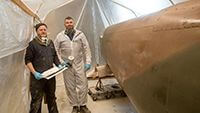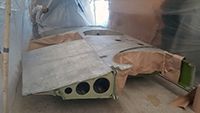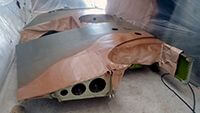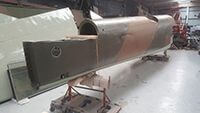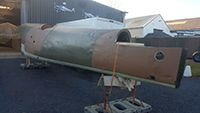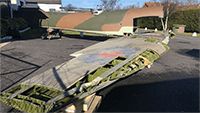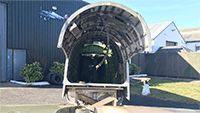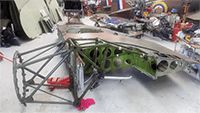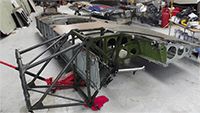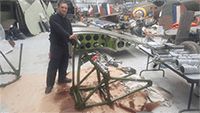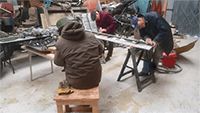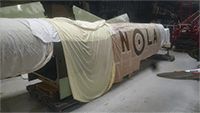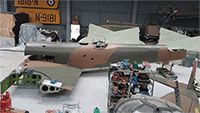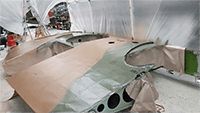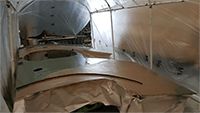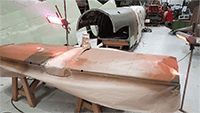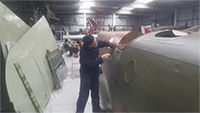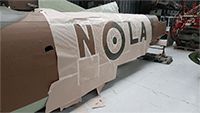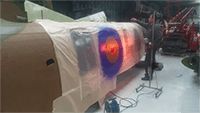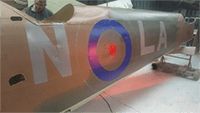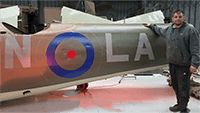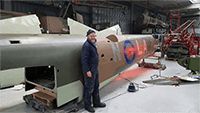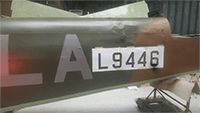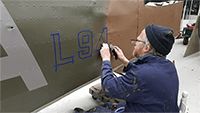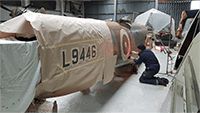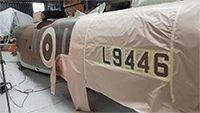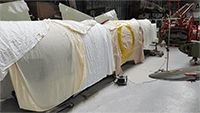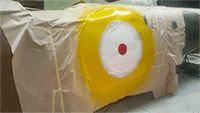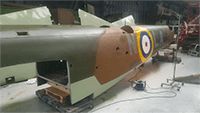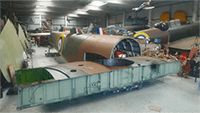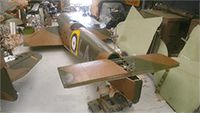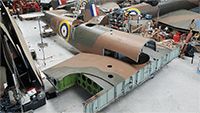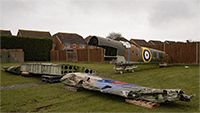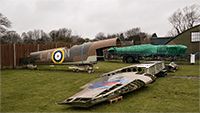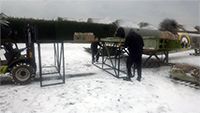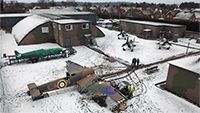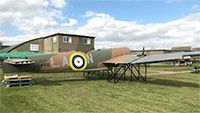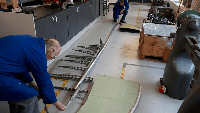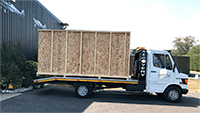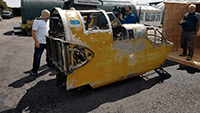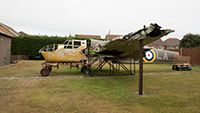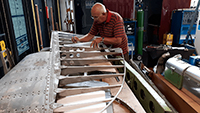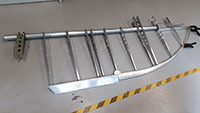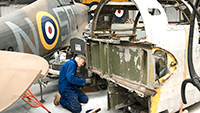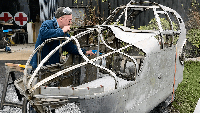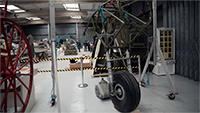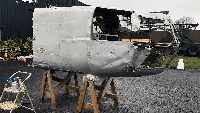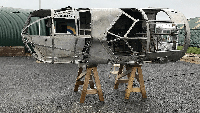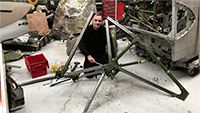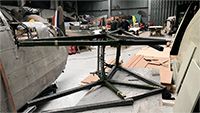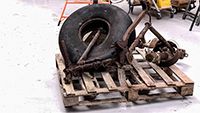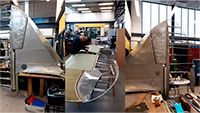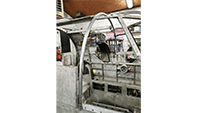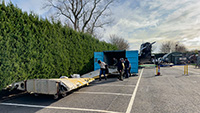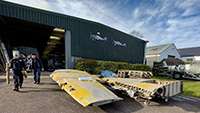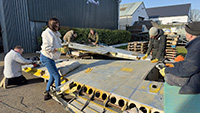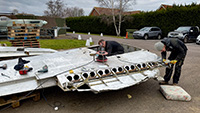The Blenheim Project
At the Kent Battle of Britain Museum Trust, Hawkinge, we display many aircraft of the types flown during the Battle of Britain including Hurricanes, Spitfires, Messerschmitt Bf 109Es, Defiant, Harvard, Tiger Moth and Magister. Due to the rarity of original Battle of Britain aircraft, let alone their value, the Hurricanes, Spitfires, Messerschmitt Bf 109s and Defiant are mostly replicas but are heavily rebuilt using many original parts.
One aircraft missing from our line-up of Royal Air Force Fighter Command machines during the Battle of Britain period was the Bristol Blenheim. To show its importance, of the 2938 airmen awarded the Battle of Britain 'clasp' and therefore classed as one of 'The Few', nearly 800 flew in Blenheims during the battle. The Blenheim was flown not only with Fighter Command but also Bomber, Coastal and Training Commands during 1940. In 1937 it became the RAF's first all-metal monocoque monoplane and was the fastest aircraft on the inventory. It remained as the Service's fastest bomber at the outbreak of the Second World War.
Therefore, the volunteers at the Kent Battle of Britain Museum Trust were very pleased and extremely excited to acquire an example of this 'plane in November 2017. Well, actually the substantial remains of four Bristol Bolingbrokes (Canadian built Blenheims) that will be rebuilt into one original airframe displayed as a Bristol Blenheim Mk. IV.
The vast majority of this Blenheim project, including a fuselage, centre section and a pair of wings arrived at the Museum in December 2017. The cockpit section will be arriving from Canada in the spring of 2018.
This will be the end of a nearly forty-year quest by the Museum Chairman, Dave Brocklehurst, to bring a Blenheim back to former RAF Hawkinge Airfield, an airfield they operated out of during 1940. Dave would often 'bicker' with Mike Llewellyn , the late Founder and Curator of the Museum, that one day we would have a Boulton Paul Defiant and a Bristol Blenheim on display. Mike said this would never happen! As many of you already know, we acquired the beautiful Boulton Paul Defiant replica, built by the Boulton Paul Association, in February 2015. Well, we hope that Mike is looking down from wherever he might be, to see that the promise Dave made to him is coming to fruition.
To enable us to complete this project, we have acquired the left-over parts from the gorgeous Bristol Blenheim Mk. I (the short nose version) that has been rebuilt and flown by Aircraft Restorations Co. at Duxford. The trustees and volunteers at the Museum would like to extend their sincere thanks to John Romain, James Gilmour and all the team at Aircraft Restorations Co. who have been instrumental in bringing our dreams to reality.
We are in the process of launching an Appeal to help fund restoration of this rare and outstanding aircraft and, if you wish to contribute, please click on the MyDonate below. In the meantime, if you can help in any other way, please let us know.
Blenheim IV / Bolingbroke Specifications
| Type : | Light Bomber / Night Fighter |
| Crew : | 3 |
| Engines : | 2 × Bristol Mercury XV 9-cylinder air-cooled radial piston engines, 920 hp (690 kW) each. |
| Propellers : | 3-bladed Hamilton Standard variable-pitch propellers, built under a license agreement (1935) by de Havilland |
| Wing Span : | 12.98m (56ft 4in) |
| Length : | 12.98m (42ft 7in) |
| Height : | 3.0 m (9ft 10in) |
| Airframe : | Metal |
| Skin : | Metal |
| Empty weight : | 4,441 kg (9,790 lb) |
| Gross weight : | 6,532 kg (14,400 lb) |
| Maximum Speed : | 428km/h at 3600m (266 mph at 11,800ft) |
| Cruise Speed : | 319km/h (198 mph) |
| Service Ceiling : | 8,310 m (27,260 ft) |
| Range : | 2,350 km (1,460 miles) |
| Armament : | Could be equipped with: Guns : 1 × 0.303 in (7.7mm) Browning machine gun in port wing 1 or 2 0.303 in Browning guns rear-firing in under-nose blister or Nash & Thompson FN.54 turret 2 x 0.303 (7.7mm) Browning machine guns in dorsal turret Bombs : 4 x 250 lb (110 kg) General Purpose bombs or 2 x 250 lb GP bombs internally and 8 x 10 lb (18 kg) GP bombs externally |

